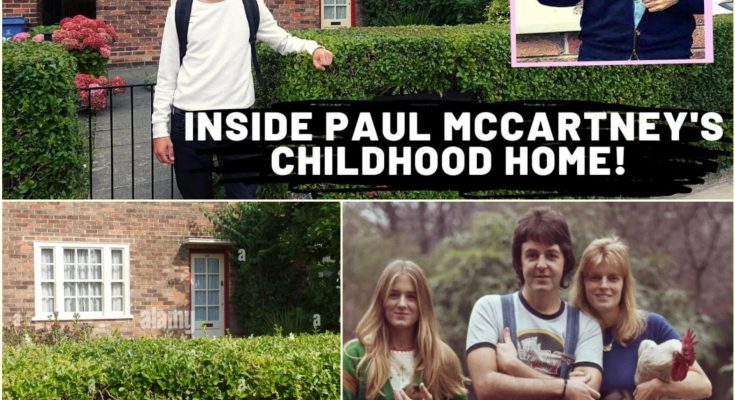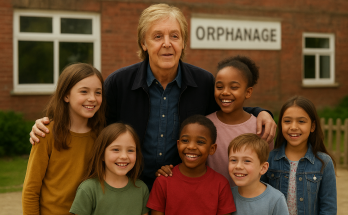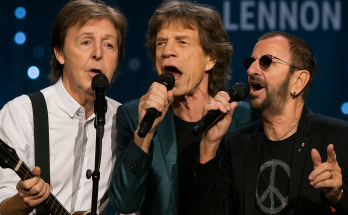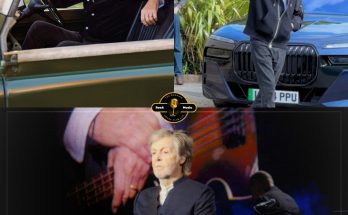Step inside Paul McCartney’s childhood home in Liverpool – a National Trust treasure where The Beatles’ story and timeless music first began.
A Humble Beginning on Forthlin Road
At first glance, 20 Forthlin Road in Liverpool looks like an ordinary mid-20th century council house. Yet for music fans around the globe, it is anything but ordinary.
This modest home is where Paul McCartney, one of the most iconic figures in music history, grew up and where many of the earliest Beatles songs were born.
Built in 1949 and acquired by the McCartney family in 1955, the house became the backdrop of Paul’s teenage years. It was here that he and John Lennon would gather, guitars in hand, experimenting with melodies that would go on to change the world. Today, the home belongs to the National Trust, carefully preserved to look just as it did when McCartney lived there.

The National Trust Tour Experience
Fans who want to explore Paul McCartney’s roots can do so through the Beatles Childhood Homes Tour, organized by the National Trust. Tickets cost around £33, covering both McCartney’s and John Lennon’s former homes. While photography and video are not allowed inside, the guided tours offer a deeply intimate experience, bringing visitors closer to the environment where history was made.
Visitors typically enter through the back door into the kitchen, a room preserved almost exactly as it was during Paul’s childhood. From there, the tour winds through the TV room, where McCartney’s father, James, spent much of his time, and into the living room often regarded as the most important space in the house.
The Living Room: Birthplace of Songs
The living room holds a special significance. It was here that McCartney and Lennon wrote and rehearsed some of their earliest songs. Stories tell of the duo running next door to share their creations with Paul’s father, who famously suggested changing the “yeah, yeah, yeah” in She Loves You to a more proper “yes, yes, yes” advice the boys wisely ignored.
A piano sits in the corner, symbolic of the instrument McCartney’s father encouraged him to learn, though Paul preferred playing by ear. Remarkably, McCartney returned to this very room decades later during a Carpool Karaoke episode with James Corden, where he performed When I’m Sixty-Four, recalling the exact spot where the song had been conceived years earlier.
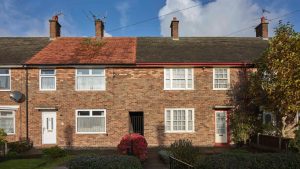
Upstairs: Bedrooms and Memories
Upstairs, visitors find the bedroom Paul shared with his brother Michael. Audio recordings by Michael narrate stories of their childhood, giving the tour a personal touch. Photos taken by Michael, who later became a photographer, line the walls, capturing candid moments from a time when The Beatles were still just a dream.
Even the bathroom holds a unique place in Beatles lore. McCartney admitted that he and Lennon used to rehearse there because of the room’s natural acoustics, joking that “everything sounds better in the bathroom.” Decades later, Paul revisited the same spot, humorously singing in the loo during his Carpool Karaoke tour of Liverpool.
A Family Shaped by Music and Hardship
Paul McCartney’s family life was a blend of challenges and inspiration. His mother, Mary Patricia, worked as a nurse and midwife, serving as the household’s main breadwinner until her tragic death from complications of breast cancer surgery when Paul was just 14. This loss deeply connected Paul with John Lennon, who also lost his mother at a young age.
Paul’s father, James McCartney, was both a trumpet player and pianist. He kept a piano in the front room and encouraged his sons to embrace music. For Paul’s 14th birthday, James gifted him a trumpet, which Paul later traded for an acoustic guitar to better accompany his singing. With that guitar, he wrote his very first song, I Lost My Little Girl, and later sketched out melodies that would evolve into When I’m Sixty-Four.
A National Treasure
In the 1980s, during Margaret Thatcher’s administration, the UK government allowed council tenants to purchase their homes. Eventually, 20 Forthlin Road was sold to the National Trust, which undertook meticulous restoration to preserve the house exactly as it was in Paul’s youth. Even the windows, donated by a neighbor, match the originals from when the house was built.
The National Trust describes it as “the birthplace of The Beatles.” Standing inside, it is easy to understand why: these walls witnessed the early spark of a band that would redefine music forever.
Why Fans Should Visit
For Beatles fans, visiting McCartney’s childhood home is more than a tourist attraction – it is a pilgrimage. To walk through the modest kitchen, see the living room where She Loves You was born, or stand in the tiny bathroom where Paul once sang with Lennon is to step into history itself.
The house is small, humble, and unpretentious, yet its cultural impact is immeasurable. Every photograph, every story shared by the guides, connects visitors to the boy who would become a legend.
Conclusion: A House That Changed the World
20 Forthlin Road may look like just another council house in Liverpool, but it holds within its walls the echoes of a revolution. It was here that Paul McCartney began his journey, shaped by family, loss, and an unshakable love for music. Together with John Lennon, he transformed youthful dreams into timeless songs that continue to inspire generations.
For fans around the world, the opportunity to step inside McCartney’s childhood home is nothing short of magical. It is a reminder that greatness often starts in the humblest of places.
